Think about the question: “Why are cats so territorial?” Do you understand their motivation to be that way? In addition, do you understand what encompasses their territory? Knowing this answer, you may also find the answer to the first question.
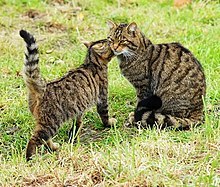
As with last week, I posed the question first in chat.openai.com, to get an overview of the answer. If you haven’t tried this artificial intelligence site, you must find answers to your questions quite amazing. The summary I received for this week’s question follows:
The cat has a territory which includes those areas he considers his own. These he seeks to defend against intruders. Look at these parts that make up a cat’s territory:
For What Areas Does A Cat Claim Ownership?
First, and very important, comes the core territory. Here, he spends most of his time and has the greatest feelings of security. The area most often includes living space and immediate surroundings, such as his sleeping spot and the area around it.
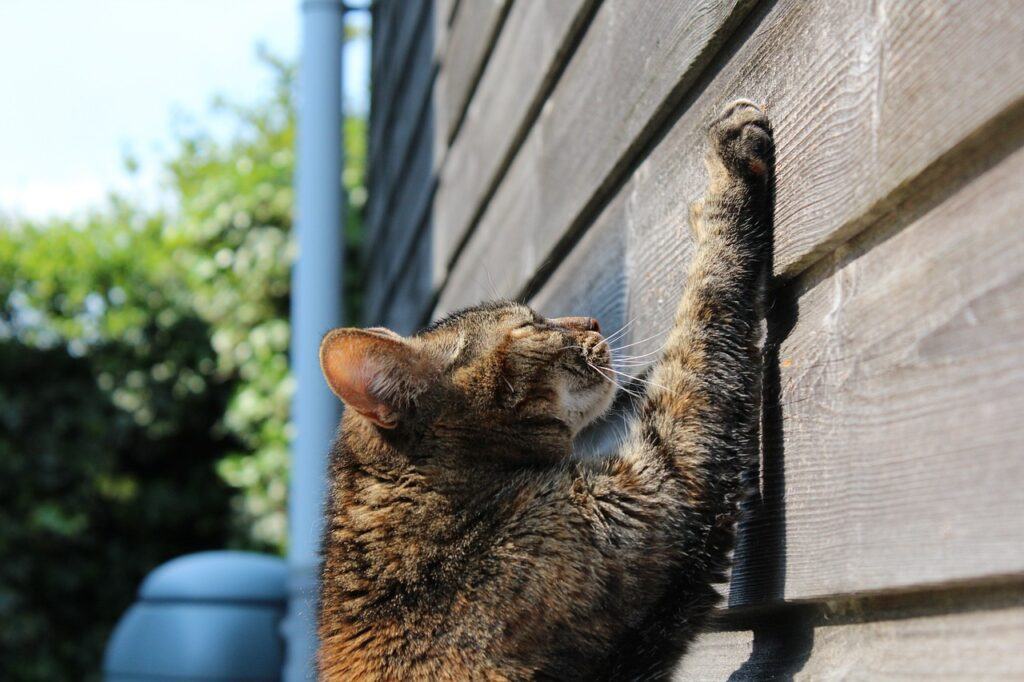
If the cat goes outdoors, an outdoor territory becomes established. Kitty might include the yard, the garden, or any other area often visited. To make it known that this area belongs to your cat, he often makes scent markings that serve the same purpose as a fence post or fencing.
Urine spray or other methods of marking establish the perimeter markings. These markings define the limits of kitty’s domain and let other visitors know that a claim to ownership exists. Included in this area you will find his favorite and regularly used hunting grounds.
Elevated spots become part of the territory, as a cat likes to be able to survey the surroundings to ensure all is well. Sometimes cats like to meet with other friend cats or even enemy cats, so a social territory may also come into play.
Consider The Similarities
When it comes right down to it, consider how similar our own ideas about territory appear. We have a core territory, which we consider our living space. Included in our routines you will find a series of spots outside the core territory that we visit often.
We don’t mark with urine spray, but we put up fences and fence posts, some inner ones for such areas as gardens, and others to mark the perimeter of our territory. If we hunt, we have even established acceptable hunting areas for this activity. We certainly have social gathering spots.
Reasons Territory Has Importance To Cats
Now, let’s look at some of the information on territory I discovered in my additional research: For example, why do cats need their own territory? Much as with us, it serves as a place of safety where they can relax without feeling a sense of danger.
A place where kitty likes to sleep definitely serves as a safe zone. A high lookout spot becomes kitty’s viewing platform. With this well-defined territory, kitty has confidence and peace of mind when conducting daily activities.
Can You Help An Indoor Cat Establish Territory?
How do you help a cat establish a territory? First, you must allocate space — a personal space just for the cat. Add a comfortable bed or a blanket that they can call their own. Then, place kitty’s essential resources in spots allowing easy access.
These resources include food bowls, water sources, and litter boxes. They need to remain in the same spots, so the cat knows where to find them at all times.

Provide various levels around the house where kitty can climb to feel safe and where the cat can establish control over surroundings. Also, include hiding spots at lower levels which allow kitty to retreat when wishing privacy.
Allow your cat to rub against you, establishing a familiar scent marker. Don’t wash kitty’s bedding too often, as having his own scent on them also becomes reassuring.
Interactive play sessions encourage your cat to explore his territory and to make best use of it. Use a variety of toys to lure kitty from one area to another. Such activities promote positive associations.
If your kitty does not go outside, a catio can prove very helpful, as it gives the cat the chance to experience a safe outside territory. These satisfy kitty’s curiosity a bit and gives them a chance to explore and experience without risking the dangers of the great outdoors.
Who Ranks As Head Cat?
If territorial disputes escalate, return to the reintroduction process. Swap their bedding to get them accustomed once again to the other’s scent. In the meantime, separate them and reintroduce them gradually. Use meal times as positive reinforcement. Eventually, a return to old friendships may prevail.
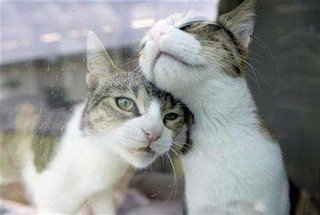
In a multi-cat household, it becomes quite normal for one cat to show more dominance. To ensure that less dominant cats don’t feel threatened, offer ample resources and spaces for each cat. Then they can claim their own peaceful spot.
Unless you must interfere to stave off dangerous fights, let the cats work out their own social hierarchy. Different ages, personalities, and health issues can affect such relationships. Use patience and understanding plus skills of observation to maintain an even level of interaction.
Philosophy Of Cats In The Wild
It becomes interesting to observe that cats in the wild try to recognize the territory of another. They don’t want fights and injuries. Their solitary forays must allow them to catch their own prey. Thus, hunting skills become vital, and injuries can affect these abilities.
By marking territory, they can share the resources in a territory, and do not have to compete directly with another animal. Sometimes one cat will occupy a spot in the morning but will leave it to be utilized by another cat in the afternoon.
Note the pattern of resting spots if you have multiple-cat households. Does one cat occupy one space at one time and another cat use it at another? It’s rather like a time-share house, where various humans occupy the same spot at different times.
Cat Communities Are Unusual
Unlike dogs, which tend to form packs, cats remain solitary hunters. Therefore, they do not usually form small communities. An exception comes from the behavior of feral cats. These animals can and do form small groups based on available food supply.
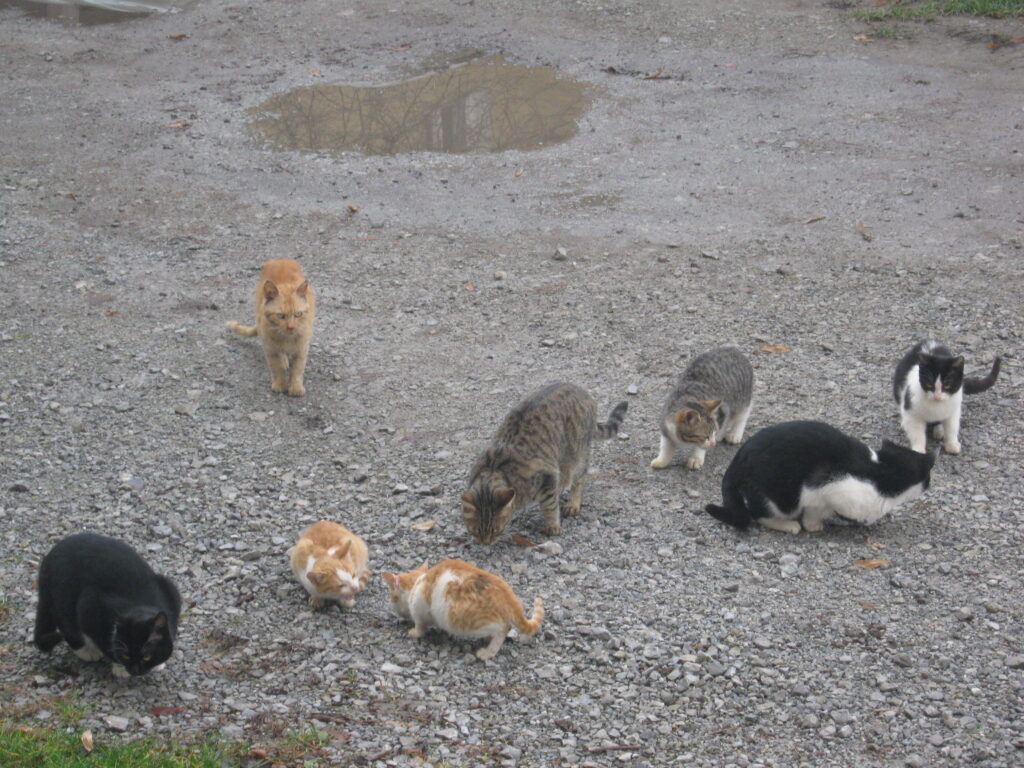
The males don’t become part of this group, unless a male kitten lives with his mother and siblings in the group. Cooperating females and kittens develop in which the females may all cooperate to help with caring for the babies. Still, they do not operate as a “pack.” Their cooperation stems from how much they can help each other.
Still, though they share a common core zone, they remain solitary hunters. If they have formed a strong social relationship with others that are familiar to them, they can become part of a group that cooperates for the common purpose of survival.
Male feral cats tend to exist on the periphery of areas that overlap groups of females. The territory of a dominant male may be quite large and may overlap other areas, dependent on the availability of food.
It seems interesting that aggression is not common within the female colonies. Often they are related, or have developed a strong familiarity. They might show some friendliness toward a tom with whom they are familiar, but still, that cat does not become part of their group.
At First A Survival Tactic
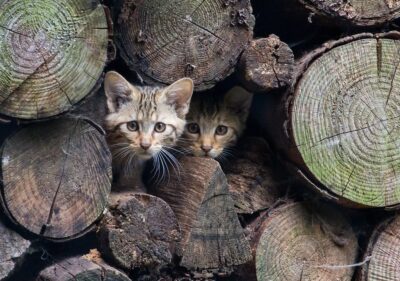
Originally, establishing a territory became a survival tactic. If such a territory becomes developed, the cat must then patrol it, scent mark its borders, and defend it against trespassers. Be aware that one reason your cat may scratch certain objects reflects part of the marking process. Therefore, be sure to provide suitable scratching posts so that your furniture does not suffer.
Just realize that, in the same way as you define certain places as “yours”, kitty needs to fill the same needs. Find ways to help the cat establish his/her own piece of turf, and you will certainly have a much more contented cat.
References I used for this post: animalreport.net/cat-territory-hierarchy-guide catsinternational.org/the-cats-view-of-territory/ icatcare.org/advice/the-social-structure-of-cat-life/ tractive.com/blog/en/good-to-know/cat-territory-size-and-range-how-far-does-my-cat-roam

